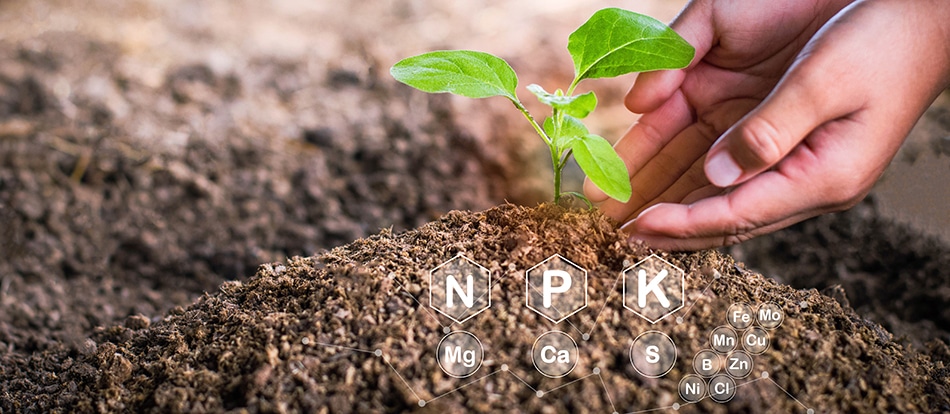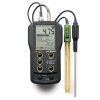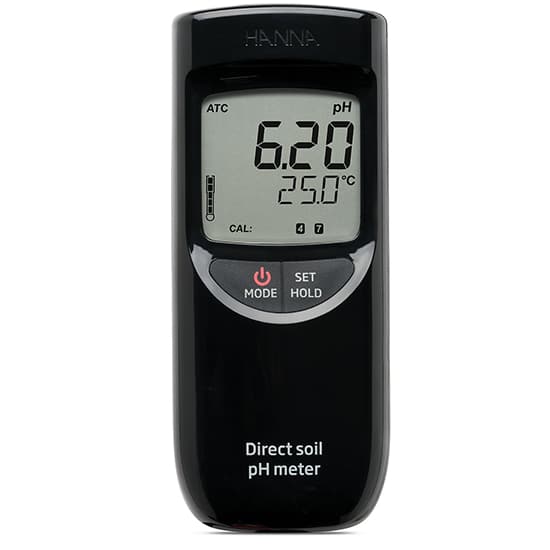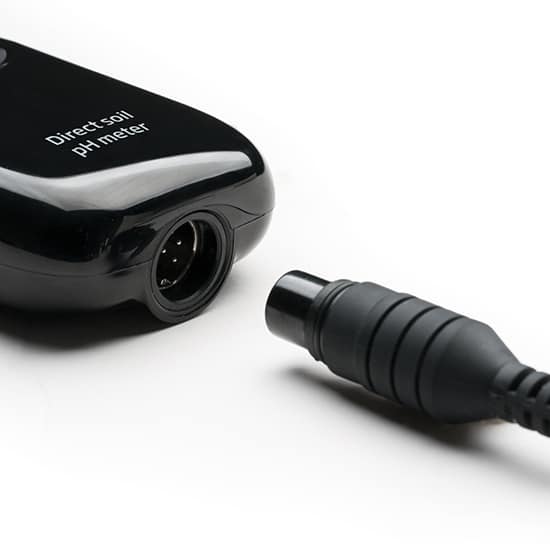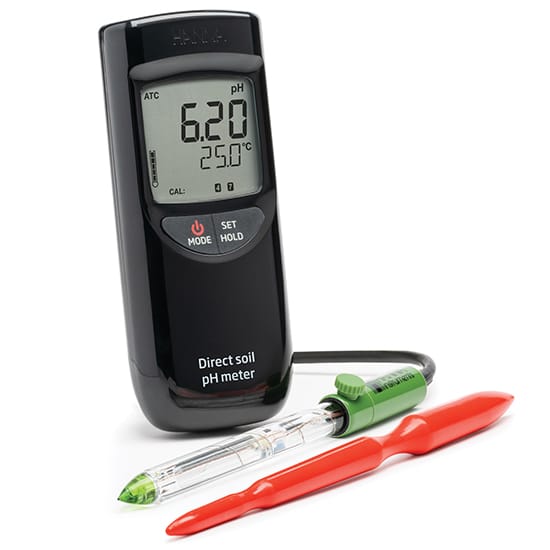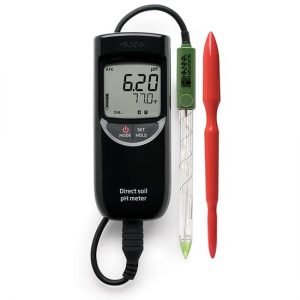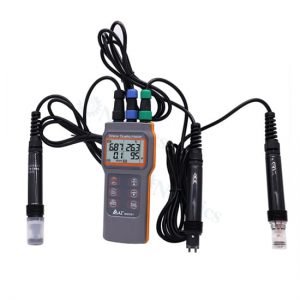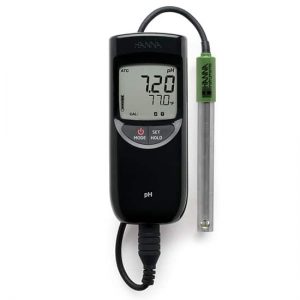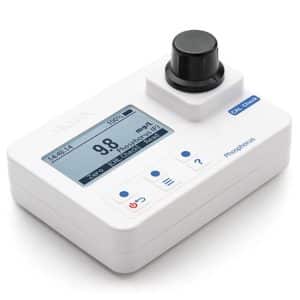HI99121 เครื่องวัด ph ดิน (Soil pH Meter) มีหน้าจอ LCD ขนาดใหญ่ซึ่งจะแสดงค่า pH และอุณหภูมิพร้อมกัน มีย่านการวัด -2.00 to 16.00 pH ด้วยความละเอียด 0.01 และความถูกต้องของ ±0.02 pH หน้าจอ LCD ยังมีตัวชี้วัดสถานะการปรับเทียบและความเสถียร รวมทั้งข้อความแนะนำบนหน้าจอ HI99121
มีคุณสมบัติพิเศษมากมายที่พบในอุปกรณ์พกพาที่มีราคาเช่นการสอบเทียบอัตโนมัติ การรับรู้บัฟเฟอร์และการชดเชยอุณหภูมิ ระดับเปอร์เซ็นต์แบตเตอรี่จะแสดงขึ้นเมื่อเริ่มต้นการแจ้งเตือนผู้ใช้ถึงระดับพลังงานแบตเตอรี่ที่เหลืออยู่
เครื่องวัดค่ากรดด่างในดิน หรือวัดค่า pH ดิน แบบพกพาที่สมบูรณ์แบบสำหรับการทดสอบความเป็นกรด-ด่างของดิน ผู้ใช้สามารถทดสอบความเป็นกรดของดินได้โดยตรงโดยการจุ่มหัววัดลงไปในดินเครื่องจะแสดงค่า pH และอุณหภูมิ หรือจะเตรียมดินด้วยน้ำ DI (Deionized)
หัววัดรุ่น HI1292D ที่ให้มามากับเครื่อวัดนั้นเป็นหัววัดดินโดยเฉพาะซึ่งมาพร้อมเซ็นเซอร์วัดอุณหภูมิในตัวที่ออกแบบมาเฉพาะเพื่อวัด pH ในดิน หัววัดที่สามารถใส่ได้โดยตรงในดินชื้นหรืออ่อน สำหรับดินที่แข็งต้องทำการขุดดินให้เป็นรูก่อนจากนั้นจึงค่อยวางหัววัดลงไปในดิน
ดินสามารถเป็นกรด กลางหรือเป็นด่าง พืชส่วนใหญ่ชอบดินที่มีค่า pH ระหว่าง pH 5.5 – 7.5 แต่บางชนิดชอบดินที่เป็นกรดหรือด่าง อย่างไรก็ตามพืชทุกชนิดต้องการค่า pH ที่เหมาะสมเพื่อการเจริญเติบโต ดังนั้นการตรวจสอบค่า pH ในดินจุงเป็นสิ่งสำคัญ
HI99121 เป็นสินค้าคุณภาพสูง มาตรฐานยุโรป ขายราคาถูก บริษัทมีอะใหล่ครบทุกชิ้นพร้อมจำหน่าย คุณภาพสูง คุณภาพสูงมีใบรับรองการสอบเทียบ (Certificate) จากโรงงาน มีคู่มือการใช้งานภาษาไทย ขายราคาถูก จัดส่งทั่วไทย
วิดีโอแนะนำเครื่องวัดดินรุ่น HI99121
Features HI99121
- Automatic Temperature Compensation
- One or two-point automatic calibration
- BEPS – Alerts the user of low battery power that could adversely affect readings
- Compact heavy-duty and waterproof
- Battery % displayed on start-up
- HELP feature: Displays messages on LCD
Specifications HI99121
- pH Range : -2.00 to 16.00 pH
- pH Resolution : 0.01 pH
- pH Accuracy : ±0.02 pH
- pH Calibration : Automatic, at one or two points with two sets of standard buffers (pH 4.01 / 7.01 / 10.01 or pH 4.01 / 6.86 / 9.18)
- Temperature Range : -5.0 to 105.0°C / 23.0 to 221.0°F
- Temperature Resolution : 0.1°C / 0.1°F
- Temperature Accuracy : ±0.5°C (up to 60°C); ±1.0°C (outside) / ±1°F (up to 140°F); ±2.0°F (outside)
- Temperature Compensation : Automatic from -5.0 to 105.0ºC (23 to 221ºF)
- Electrode/Probe : HI1292D glass body, pre-amplified pH electrode for soil measurement with internal temperature sensor, DIN connector and 1 m (3.3’) cable (included)
- Battery Type/Life : 1.5V (3) AAA / approximately 1200 hours of continuous use; auto-off after 8 minutes of non-use
- Environment : 0 to 50°C (32 to 122°F); RH max 100%
- Dimensions : 152 x 58 x 30 mm (6.0 x 2.3 x 1.2”)
- Weight : 205 g (7.2 oz.)

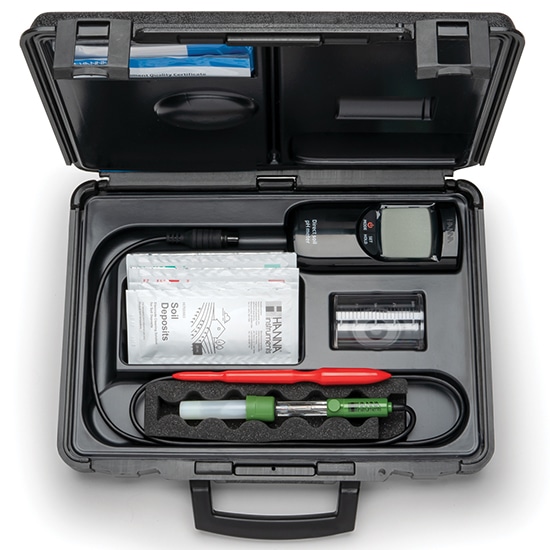
PDF Catalog
Soil can be acid, neutral or alkaline, according to its pH value. Most plants prefer a pH range from 5.5 to 7.5; but some species prefer more acid or alkaline soils. Nevertheless, every plant requires a particular range of pH, for optimum growth.
pH strongly influences the availability of nutrients and the presence of microorganisms and plants in the soil.
For example, fungi prefer acidic conditions whereas most bacteria, especially those supplying nutrients to the plants, have a preference for moderately acidic or slightly alkaline soils. In fact, in strongly acidic conditions, nitrogen fixing and the mineralization of vegetable residual is reduced.
Plants absorb the nutrients dissolved in the soil water and the nutrient solubility depends largely on the pH value. Hence, the availability of elements is different at different pH levels.
Each plant needs elements in different quantities and this is the reason why each plant requires a particular range of pH to optimize its growth. For example, iron, copper and manganese are not soluble in an alkaline environment.
This means that plants needing these elements should theoretically be in an acidic type of soil. Nitrogen, phosphorus, potassium and sulfur, on the other hand, are readily available in a pH range close to neutrality.
Furthermore, abnormal pH values, increase the concentration of toxic elements for plants. For example, in acid conditions, there can be an excess of aluminum ions in such quantities that the plant cannot tolerate. Negative effects on chemical and physical structure are also present when pH values are too far from neutral conditions (break up of aggregates, a less permeable and more compact soil).
